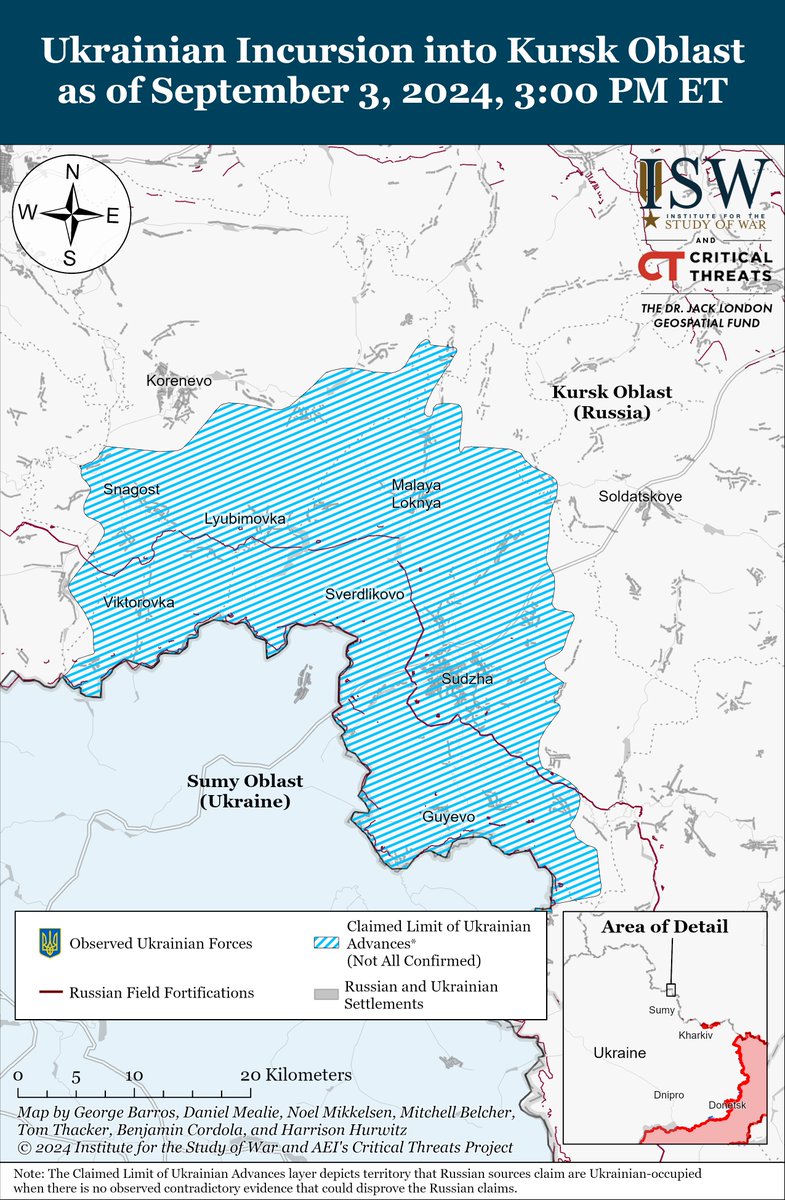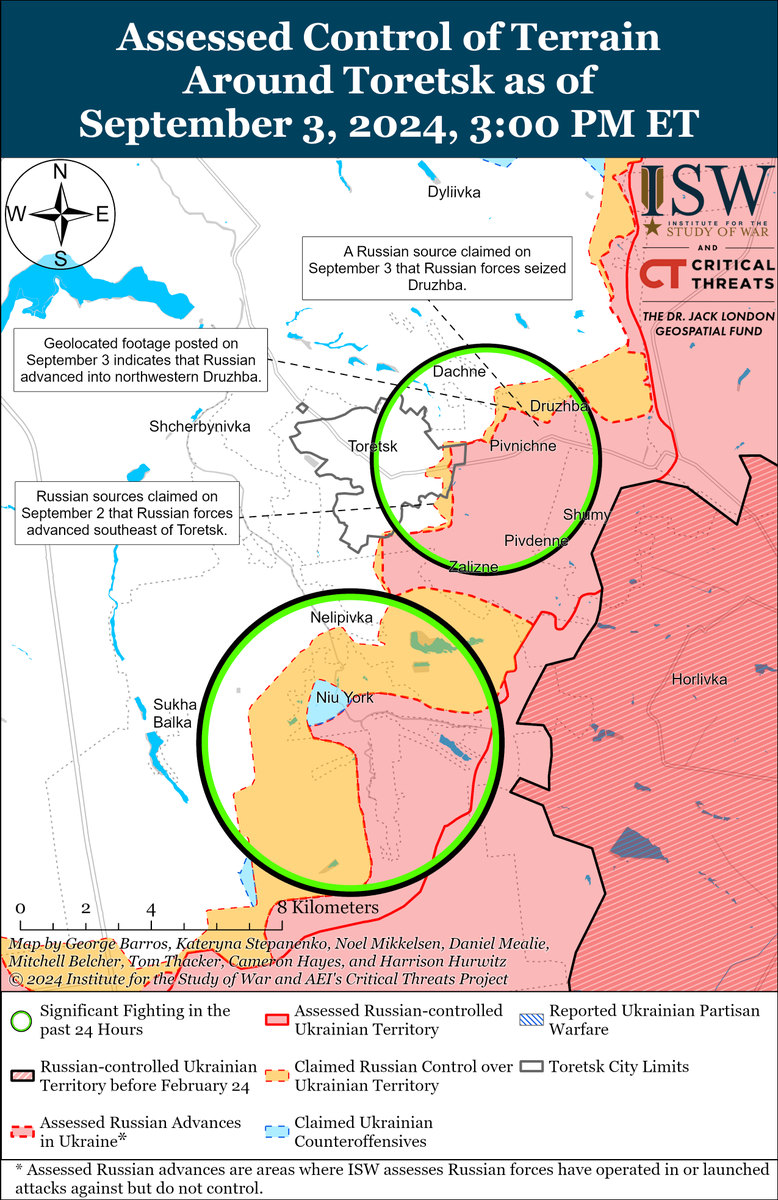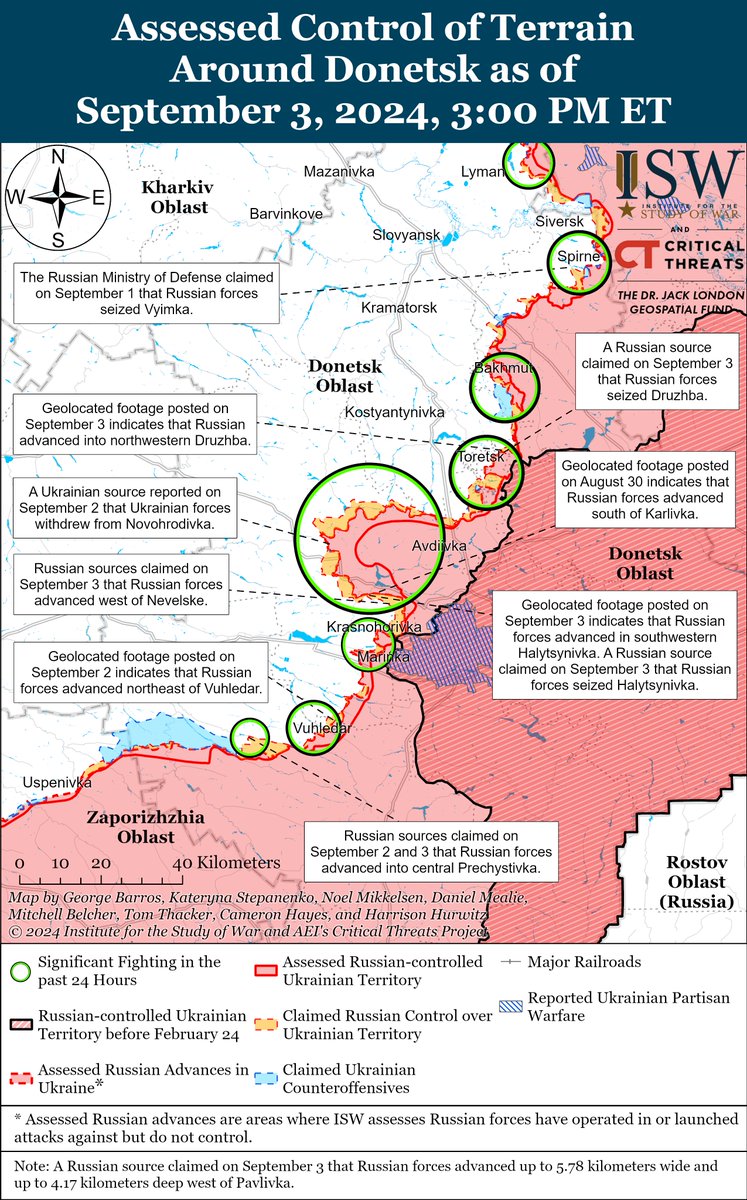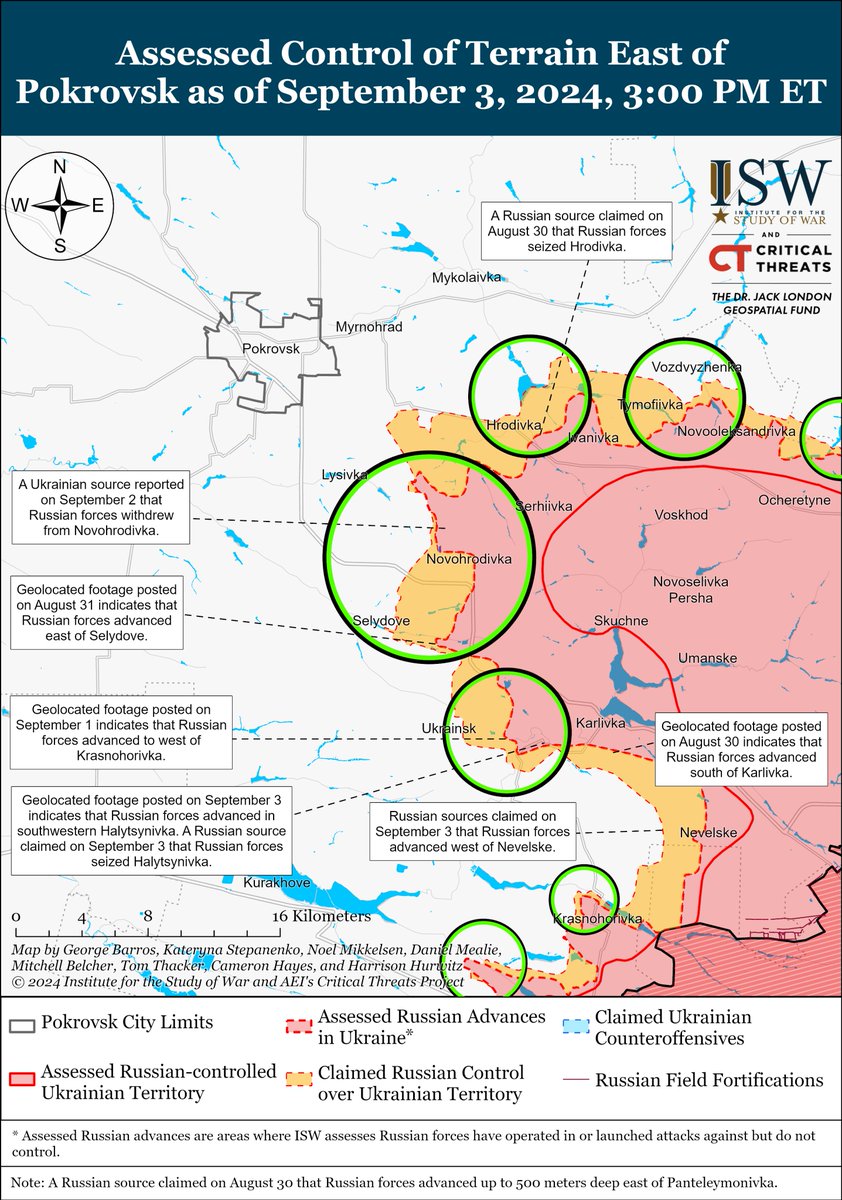Russian forces recently advanced near Chasiv Yar, southeast of Kupyansk, and in the Kherson direction and Ukrainian forces recently regained positions north of Kharkiv City. 🧵(1/5)




https://twitter.com/TheStudyofWar/status/1831867946399867074


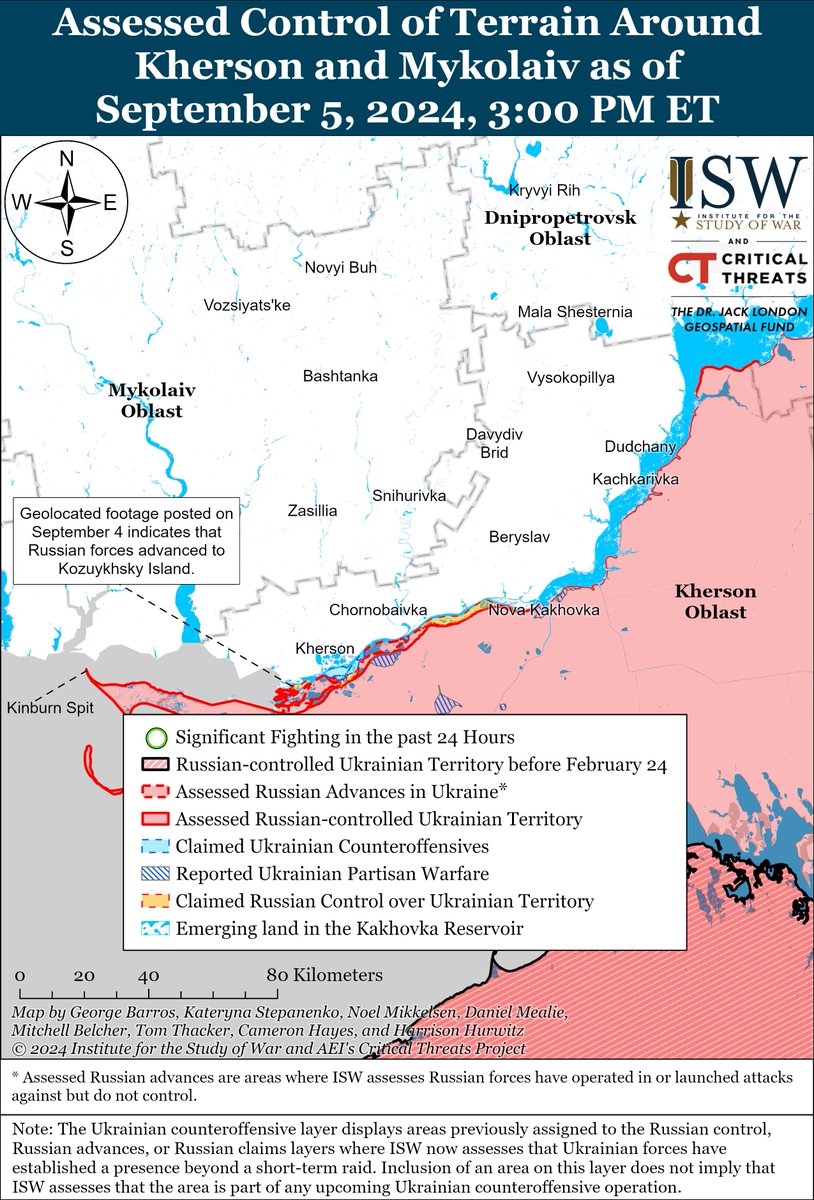

2/ Ukrainian forces recently regained positions north of Kharkiv City amid continued Russian offensive operations in northern Kharkiv Oblast. Geolocated footage published on September 4 indicates that Ukrainian forces recently regained lost positions northeast of Lyptsi (north of Kharkiv City).
Russian forces continued attacking north of Kharkiv City near Hlyboke and northeast of Kharkiv City near Vovchansk on September 5.
Ukraine's Kharkiv Group of Forces reported that personnel in the Russian 7th Motorized Rifle Regiment (11th Army Corps [AC], Leningrad Military District [LMD]) operating near Lukyantsi (north of Kharkiv City) are suffering from a shortage of potable water and refuse to conduct some unspecified operations.

Russian forces continued attacking north of Kharkiv City near Hlyboke and northeast of Kharkiv City near Vovchansk on September 5.
Ukraine's Kharkiv Group of Forces reported that personnel in the Russian 7th Motorized Rifle Regiment (11th Army Corps [AC], Leningrad Military District [LMD]) operating near Lukyantsi (north of Kharkiv City) are suffering from a shortage of potable water and refuse to conduct some unspecified operations.


3/ Russian forces recently marginally advanced southeast of Kupyansk amid continued offensive operations along the Kupyansk-Svatove-Kreminna line on September 5.
Geolocated footage published on September 4 indicates that Russian forces recently marginally advanced northwest of Pishchane (southeast of Kupyansk).
Russian forces continued offensive operations northeast of Kupyansk near Synkivka; southeast of Kupyansk near Tabaivka, Hlushkivka, Kruhlyakivka, Berestove, Andriivka, and Myasozharivka and towards Lozova; southwest of Svatove near Druzhelyubivka, Cherneshchyna, Hrekivka, Makiivka, Nevske, and Novosadove; and west of Kreminna near Torske on September 4 and 5.

Geolocated footage published on September 4 indicates that Russian forces recently marginally advanced northwest of Pishchane (southeast of Kupyansk).
Russian forces continued offensive operations northeast of Kupyansk near Synkivka; southeast of Kupyansk near Tabaivka, Hlushkivka, Kruhlyakivka, Berestove, Andriivka, and Myasozharivka and towards Lozova; southwest of Svatove near Druzhelyubivka, Cherneshchyna, Hrekivka, Makiivka, Nevske, and Novosadove; and west of Kreminna near Torske on September 4 and 5.


4/ Russian forces recently advanced south of Chasiv Yar and continued offensive operations in the area on September 5.
Geolocated footage published on September 4 indicates that Russian forces recently advanced west of Klishchiivka (southeast of Chasiv Yar) along the Siverskyi-Donets Donbas Canal.
Russian forces continued offensive operations near Chasiv Yar, north of Chasiv Yar near Kalynivka, east of Chasiv Yar near Ivanivske, southeast of Chasiv Yar near Klishchiivka, and south of Chasiv Yar in the direction of Predtechyne and Ivanopillia on September 4 and 5.

Geolocated footage published on September 4 indicates that Russian forces recently advanced west of Klishchiivka (southeast of Chasiv Yar) along the Siverskyi-Donets Donbas Canal.
Russian forces continued offensive operations near Chasiv Yar, north of Chasiv Yar near Kalynivka, east of Chasiv Yar near Ivanivske, southeast of Chasiv Yar near Klishchiivka, and south of Chasiv Yar in the direction of Predtechyne and Ivanopillia on September 4 and 5.


5/ Russian forces recently advanced in the Kherson direction amid continued Russian assaults in the area on September 4 and 5.
Geolocated footage published on September 4 indicates that Russian forces recently seized positions on the eastern part of Kozulyskyi Island (southwest of Kherson City) in the Dnipro River Delta.

Geolocated footage published on September 4 indicates that Russian forces recently seized positions on the eastern part of Kozulyskyi Island (southwest of Kherson City) in the Dnipro River Delta.


• • •
Missing some Tweet in this thread? You can try to
force a refresh



















